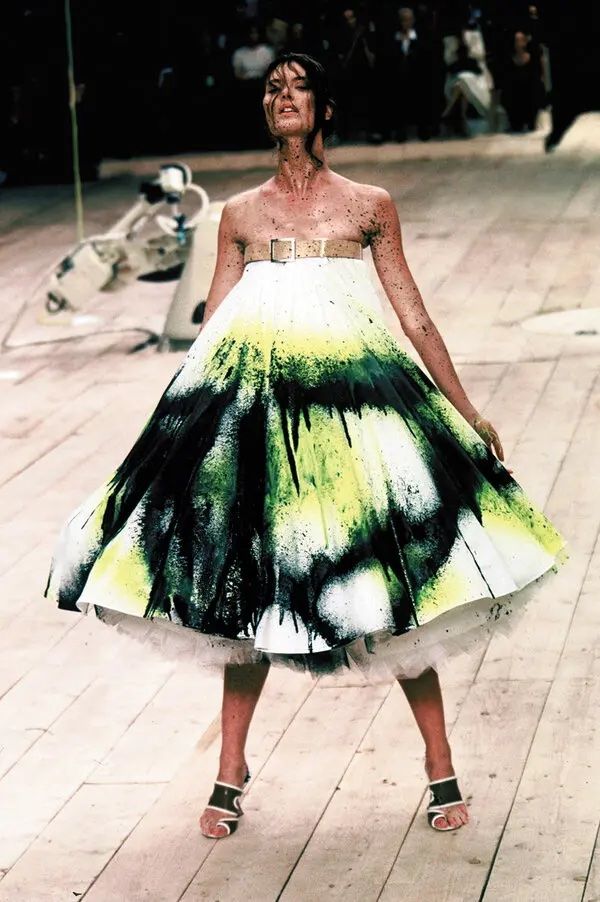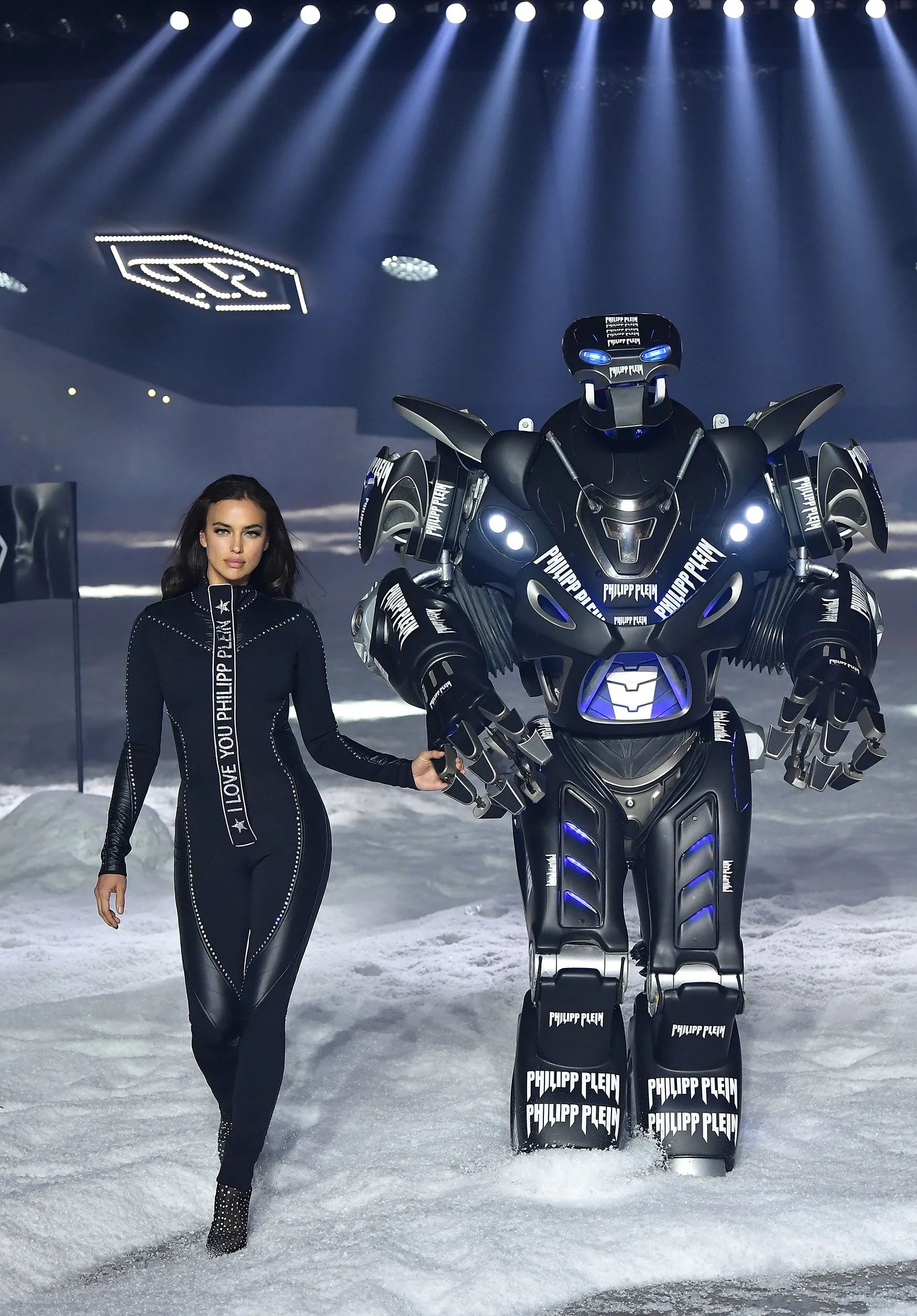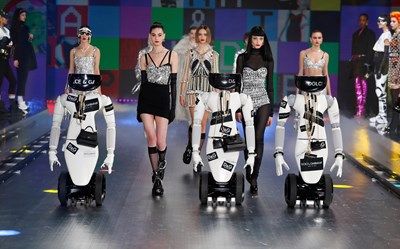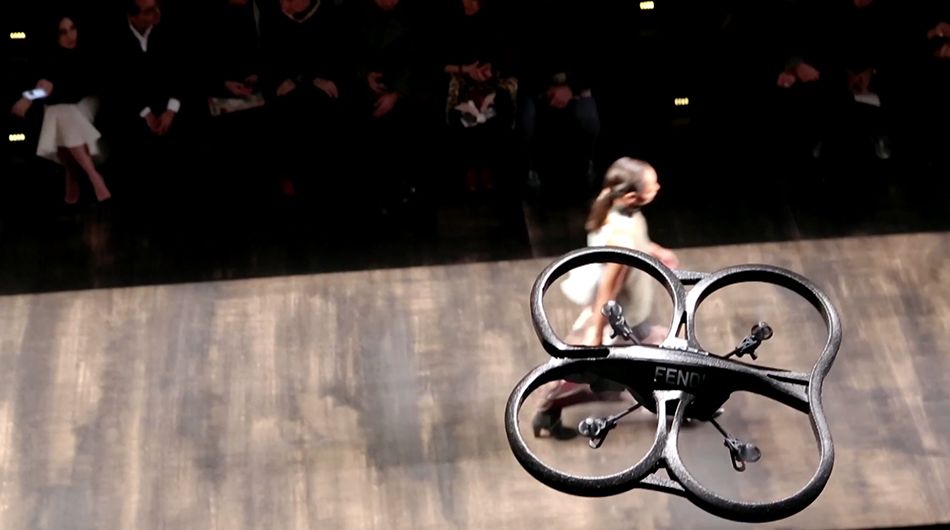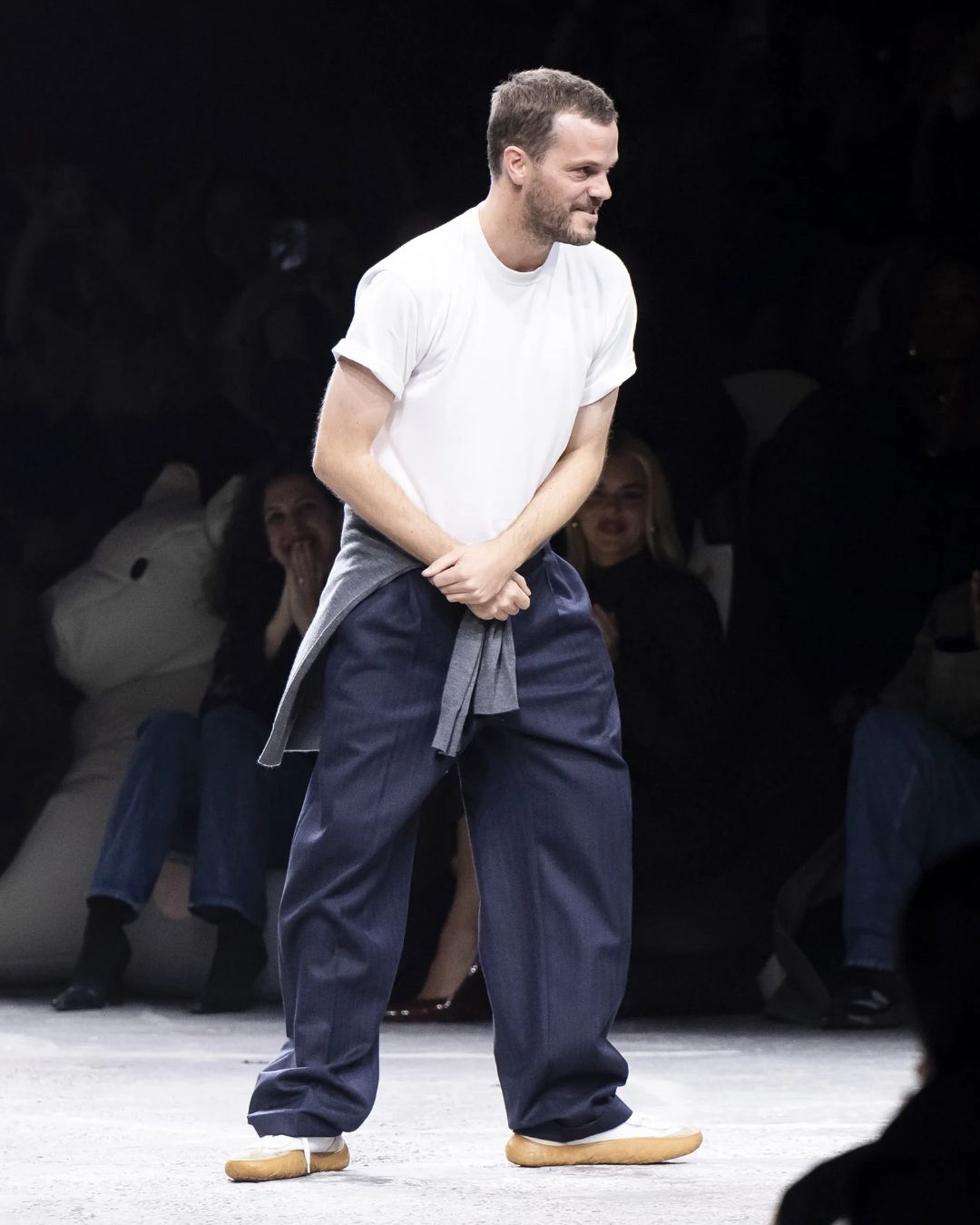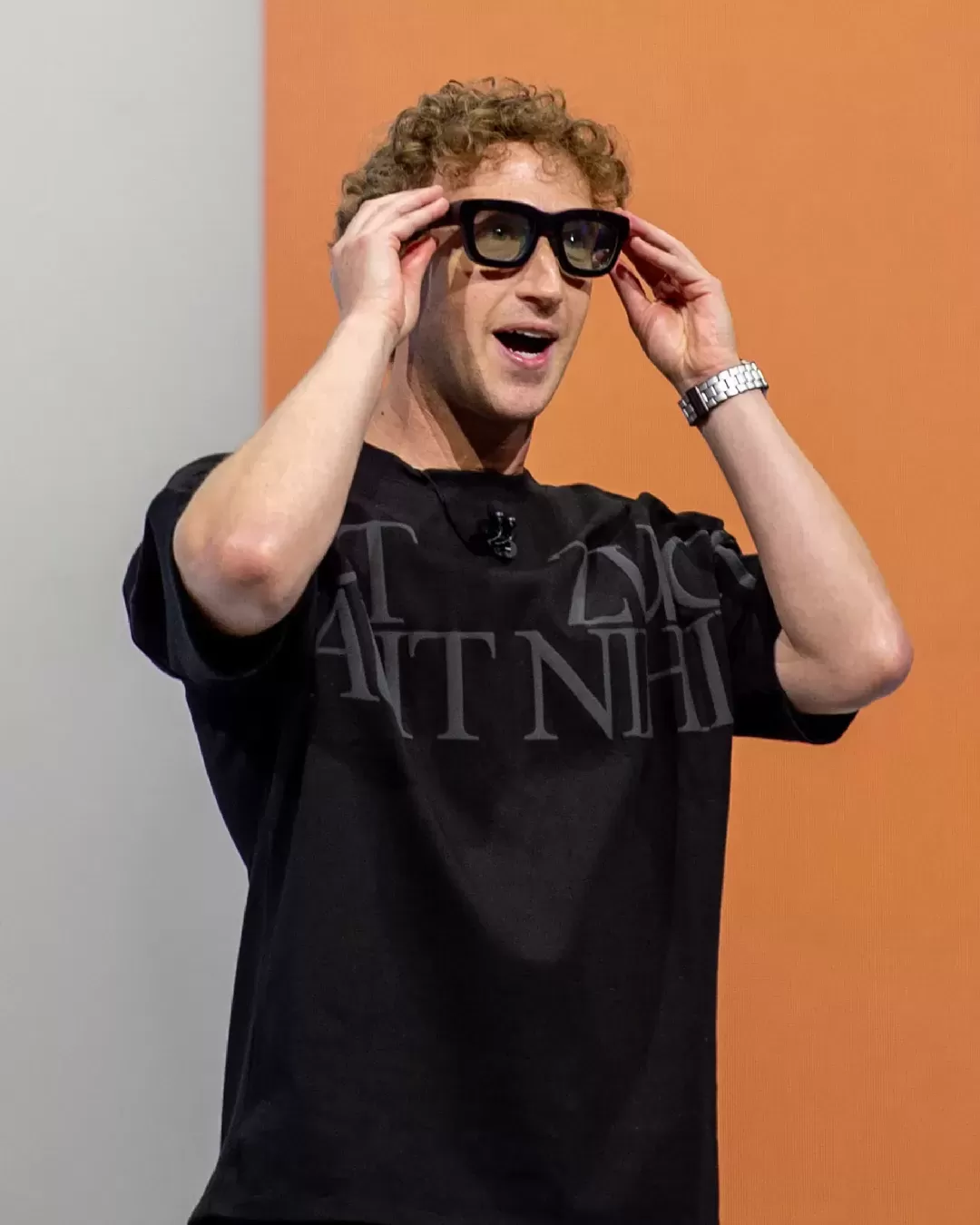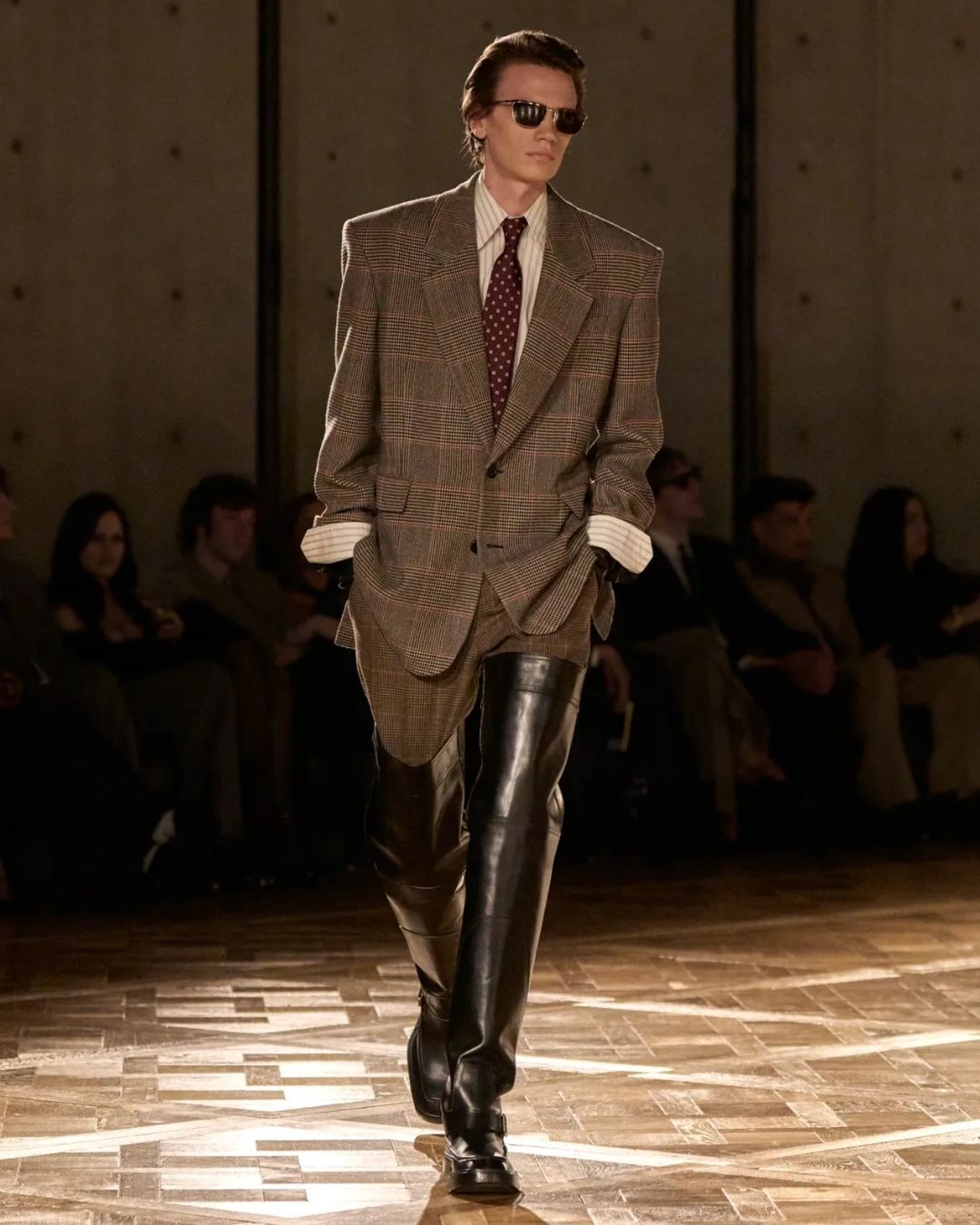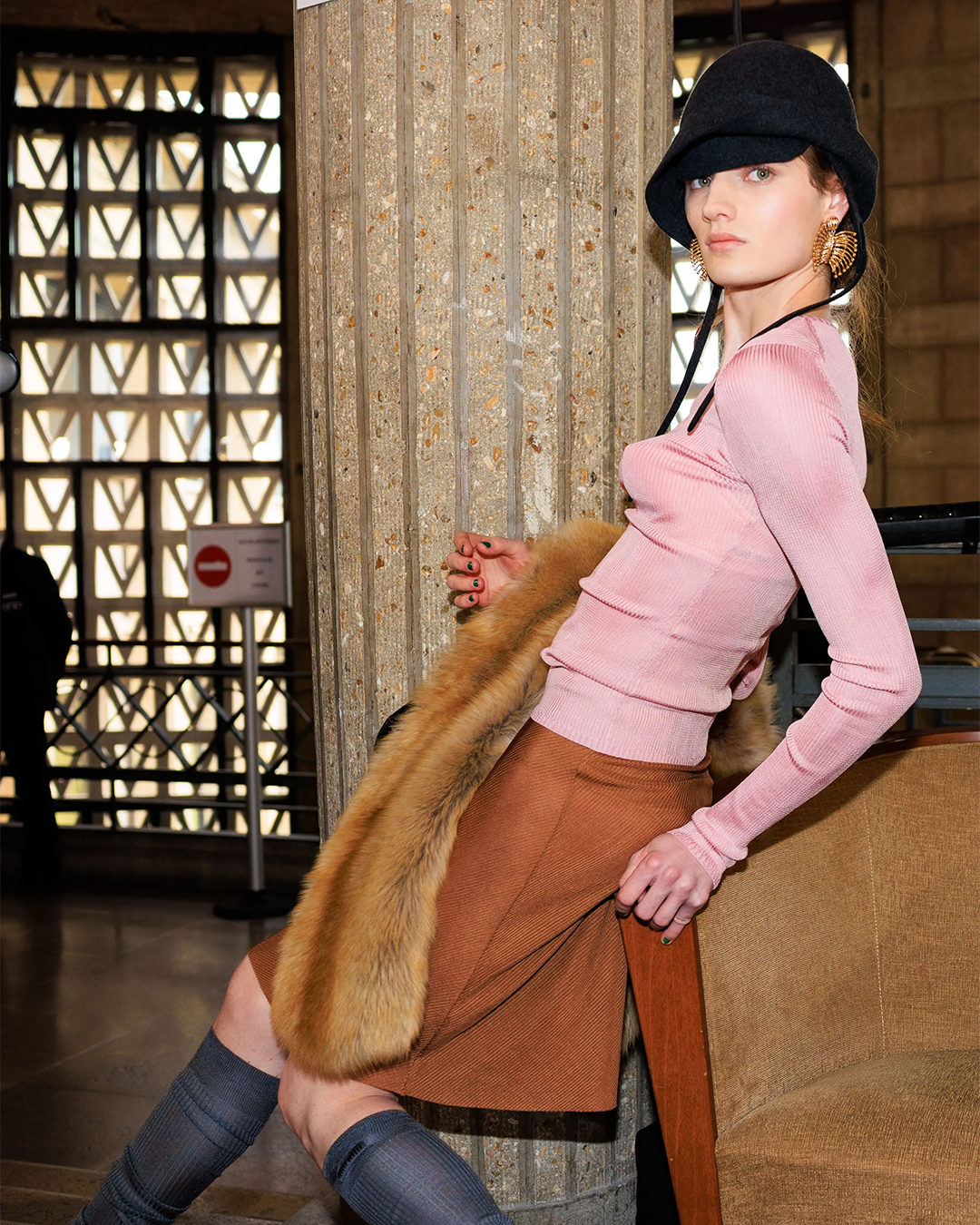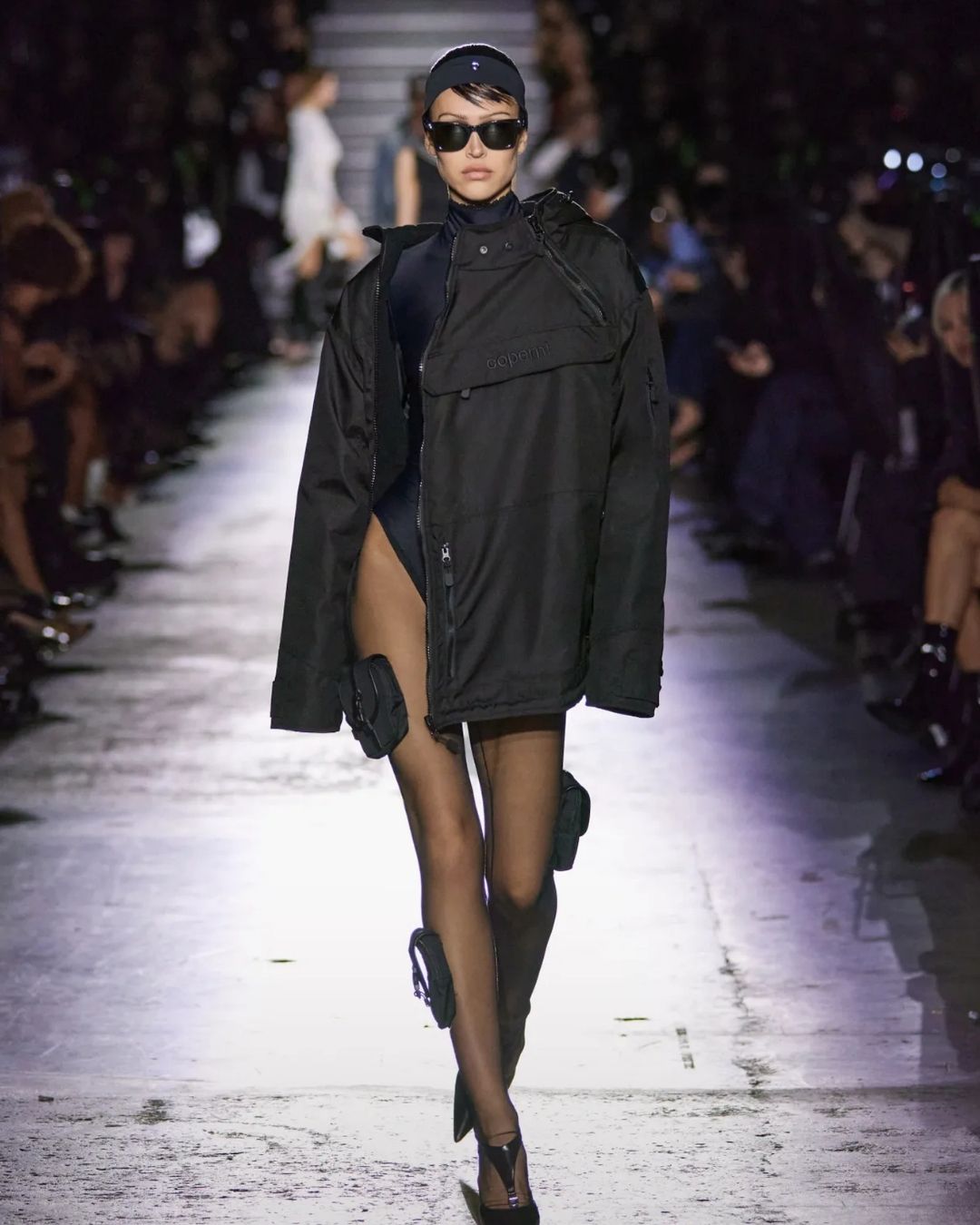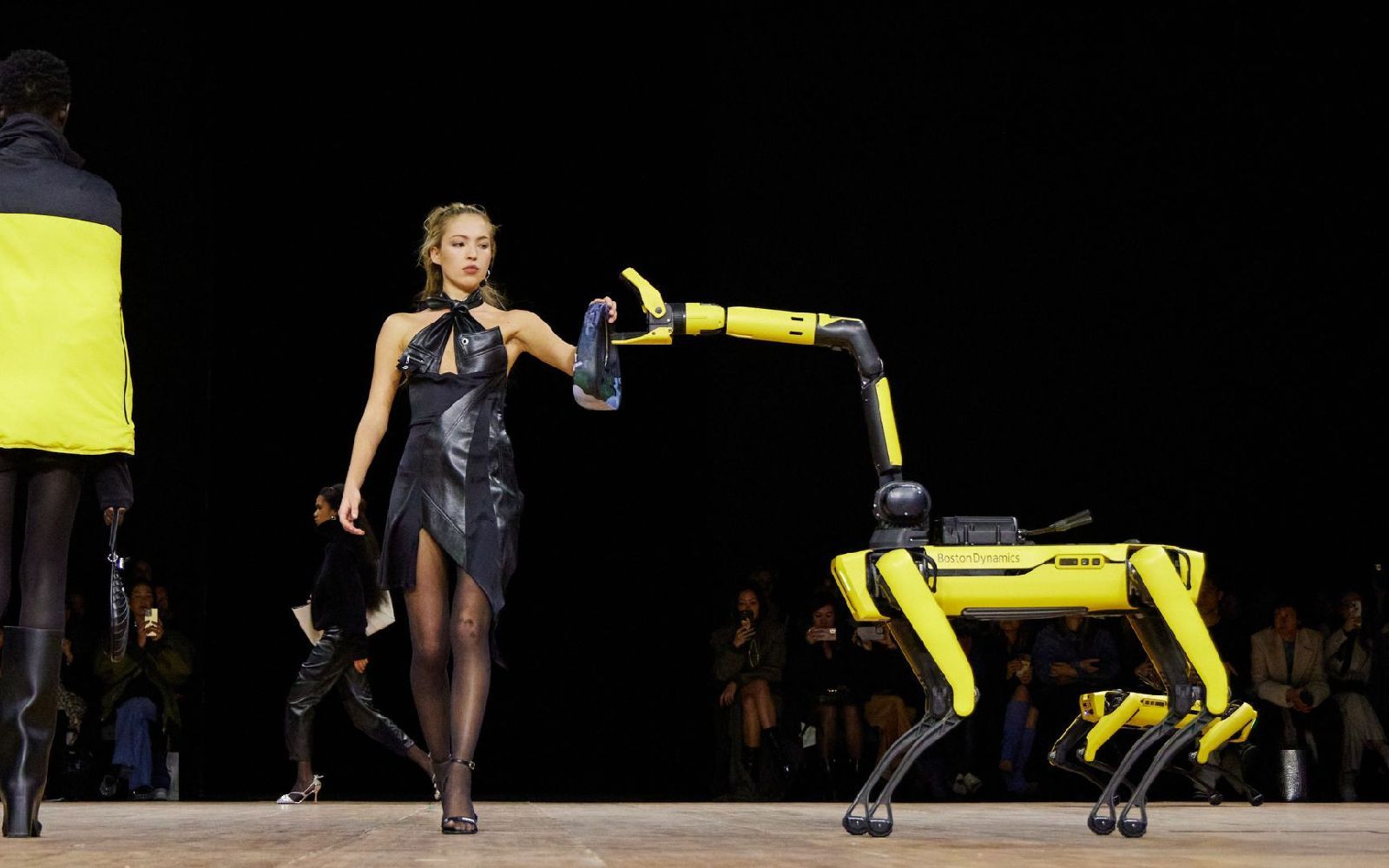
Coperni's robot dogs bred general discontent Will technology in fashion ever be praised?
Taking a deep breath from viral fashion moments torching Paris Fashion Week shows, Coperni’s robot dogs dropped another subject of debate. Last week the brand introduced its Le Loup et L’Agneau Fall/Winter 2023 runway show starring Spot – Boston Dynamic’s mobile robot dog. Social media users took the comment section by storm, pointing out the lack of particular purpose, the brand’s thrust for a gimmick and, at last, the underwhelming dystopian surveillance energy. With the history of robot appearances on runways and the current paradigm shift in Artificial Intelligence (AI), robots are here to stay; but where does the path lie toward a more homogenous transition and intermarriage of humans and technology? And should fashion brands push the boundaries of technological development whilst preserving authenticity?
As models walk onto Coperni’s stage, Spots (robots) assess them in holding, handing the bags and tugging the jacket off a model’s shoulder. Yet, robots seem to give little or no value in terms of utility, considering the innovation boost nowadays. Days earlier, in anticipation of this dystopian, or perhaps, idyllic reality, Heliot Emil brought robot mascots that simply checked on its F/W23 show guests. The issue surrounding these robots revolves around the obscurity of their presence, though Coperni proved (Bella Hadid’s spray-on dress) its fixation on tech. Yet, in the pursuit of bringing positivity into the potential harmonious co-living of humans and robots, as the brand puts it, robot dogs appear more as dominant power and, perhaps, a “threat.” Many recall the iconic Alexander McQueen’s Spring 1999 collection. Shalom Harlow, in a white cotton trapeze dress, danced between two robots that sprayed black and yellow paint on her cloth, bringing about a futuristic design. Other brands followed the lead. Hussein Chalayan's moulded plastic dress opened by remote control during S/S 2000’s show. Seven years later, he created an eye-opening high-neck Victorian-style dress, which mechanically transformed into a different silhouette. With a nine-year interval, HRP-4C – robot-slash-(rising?) model – hit Tokyo catwalks, causally walking, talking, and bowing to the audience, except without clothes. Fendi broke new ground with a three-flying “Drone Cam” filming its catwalk in 2014. This news appeared mind-blowing, considering the time frame.
Three years later, in 2017, Chanel featured models, wearing robot headsets with flashing LED displays, walking at the imaginary Chanel Data Centre. «It's not technology in a cold way, it's intimate technology,» said Karl Lagerfeld. «Even if you don't like the idea, technology rules the world because it changed the world and it made many things easier.» In 2018, Philipp Plein threw a spectacle with a UFO set and Irina Shayk emerging from a spaceship to hold hands with a gigantic transformer. Here, as in the case of Chanel, the robot served as a complement to the style and the narrative. Technology sort of became a background feature or an object enhancing the collection’s theme. The same applies to Hajime Sarayama’s Metropolis-inspired retro-futurist robot sculpture for Dior’s Pre-Fall 2019 menswear show and Dolce & Gabbana’s F/W 2021/22 iCub and R1 multifunctional humanoids. «Fashion has always been the result of the confluence of worlds that can be very far from each other: if technology is truly serving the man, his needs and his passions, then a craftsman and a robot will be able to coexist,» said Domenico Dolce and Stefano Gabbana. The fashion designer who came closer to McQueen’s and Chalayan’s effect was Issey Miyake, who let the technology dress models on the runway, resulting in a soft and positive collaboration of humans and technology.
Last week, tech billionaire Elon Musk predicted that AI-powered humanoid robots would eventually outnumber humans. He presented an updated “Optimus” robot prototype during Tesla’s first Investors Day, the one that wasn’t ready to walk last year. Now, he assured it largely excelled over the previous version. «It is obviously not doing parkour, but it is walking around, and we have multiple copies of Optimus,» said Musk. He plans to use them in Tesla factories and later open them for public sale. Perhaps, these latest ambitious AI projects have inspired fashion designers to keep an eye on technologies as it is even closer nowadays to reality than ever before. So, while Mr Musk is busy polishing Optimus to replace humans, long after sharing concerns about artificial intelligence’s potential to become the «biggest existential threat», perhaps, fashion can delve deeper into featuring the practical ways of integrating robots in the fashion set. Technologies are creating a new vocabulary in the artistic field. It is the matter of research and creative amalgamation of the two spheres that make the difference.









































